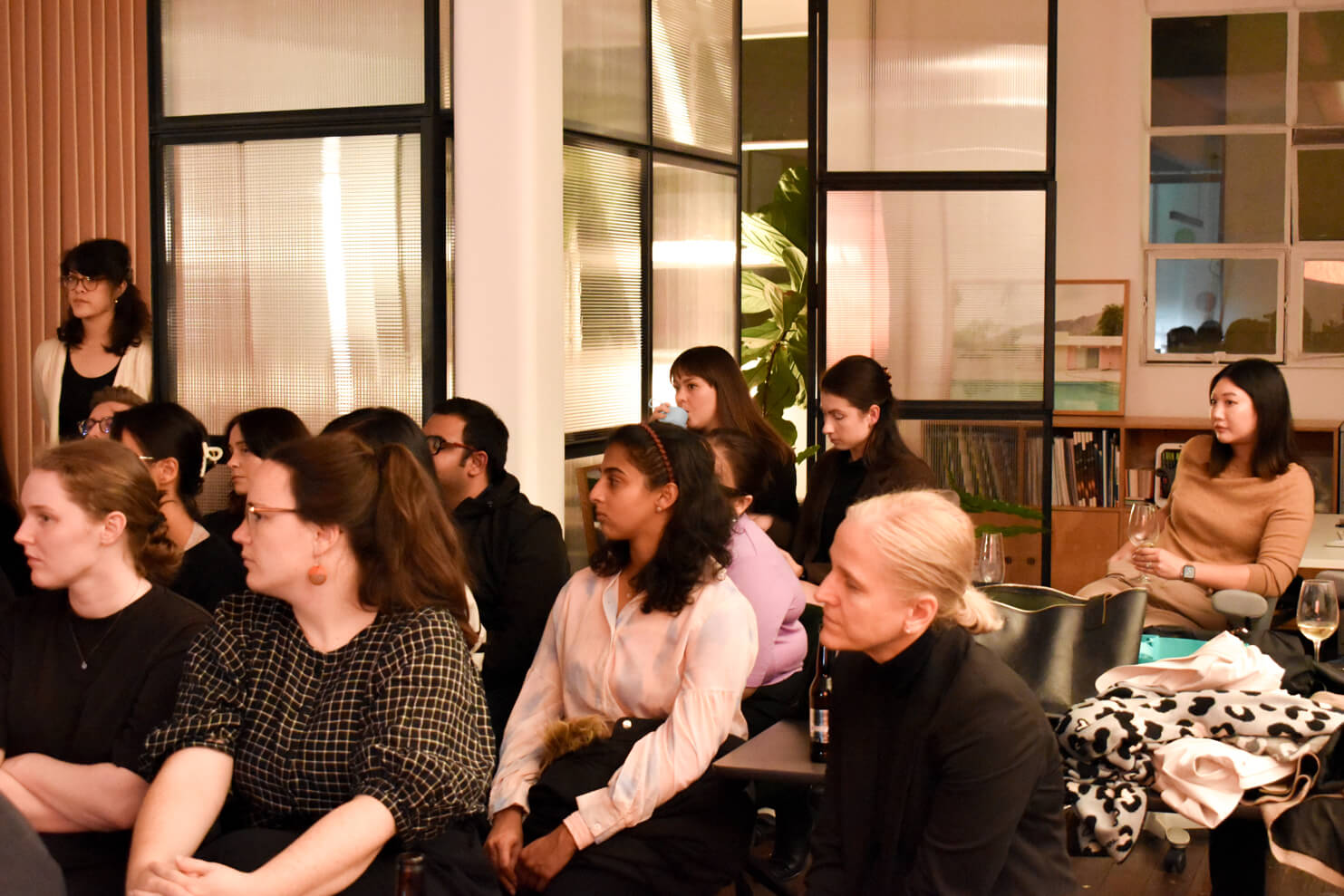
Bringing together a collective of small practice architects, the Looking beyond traditional architecture services forum considered alternative research models, architects delving into prefabrication, and even new ways to make architectural services more accessible. The forum questioned whether offering traditional architectural services is enough for emerging architects and graduates, or whether we can all be doing more.
Held on a chilly evening in May, there was no better setting than the intimate lounge at Kosloff Architecture to gather four of Melbourne’s most innovative small practice studios. With a small audience of 25 and the dim after-hours lighting of the studio, it was here that the speakers, all experts in their field, shared stories of why their respective practices have broken the boundaries of typical architectural services.
Simulaa’s co-director, Anna Jankovic shared how their research-based practice embraces critical experimentation that reconciles project relationships with technology, energy, waste and ecology. Building on the advice once received from a university tutor, Simulaa use academia and teaching as a solid means of establishing a foundation for their architectural identity within the profession. Being active in the realm of academia and education arms Simulaa with a platform to test and play with their ideas before pushing them out to architectural competitions – a format that Jankovic noted as being a key type of project for a practice such as Simulaa. “Our phone doesn’t ring,” she shares, noting how the majority of their projects are ones they have sought out and bedded down through their research-based involvement with specific architectural typologies.
Paralleling Simulaa’s beginnings, Barraco + Wright’s co-founder, Louise Wright, reflected on the organic development of their architectural practice. “Trying to see architecture beyond the building, remains key to Baracco + Wright’s work. Embracing the collaborative environments found in architectural education paved a clear identity for Baracco + Wright, whose projects, more often than not, have a strong relationship to context and landscape. Wright spoke of collaborators from different fields diversifying their architectural offering. Although, this did not go without Wright acknowledging the challenges of starting a business and being upfront on the symbiotic relationship between teaching and practicing as an architect from a financial lens.
Shifting gears, the evolution of multifaceted architecture practice, Archier grew not from involvement in architectural education or academic style research, but from “a clarity of expectation”, shares procurement director, Chris Haddad. Expanding the practice into one that now operates with a pre-fabrication services arm, Archier found a gap in their client offerings. A “streamlined design and documentation process was missing from our practice”, shared Haddad, triggering the genesis of a supplementary service that most architects do not offer. This occurred through connecting with and embracing a more hands-on approach with industry collaborators that were more directly involved in construction. Having “experienced the fatigue of standard practice work that requires looking at the screen and feeling the economic pressures many clients often face,” Haddad noted how they instead wanted to challenge the notion of working smart as an architect while also breaking down the barriers of architecture that can “often be perceived as overwhelming or intimidating to clients.” By introducing prefabricated models, while also engaging with manufacturers and inviting local artisans to collaborate on fabrication, Archier have developed a supplementary business and financial model, while also broadening architecture’s relationship with other design industries making it more accessible.
While working smart encouraged Archier to look at alternative building models, Daniel Moore, the Victorian Chapter Executive director, tabled a discussion around sustainability. Running Open Creative Studio alongside his work with the Institute, Moore operates his practice heroing communication and offering reduced-rate services, working with uniquely curated design licences for clients who may not want full architectural services. Challenging the potential in existing architectural ideas that exist in his established drawings, Moore notes how he has often “produced enough design work that is left behind in the early stages” that could undoubtedly be carried further. Encouraging the audience to consider the potential behind abandoned ideas, Moore shared how his practice has worked with lawyers on adjusting traditional client agreements, enabling Open Creative Studios to essentially recycle previous work and operate more sustainably. Of course, this also carried conversation around respecting intellectual property while continuously working efficiently as an architectural practice. As this work structure is akin to those of a volume builder, it begged the question how more ordinary architecture practices and educational institutions place pressure on coming up with something new at each turn of a project.
In a culture of being unconventional, smaller practices are approaching alternative threads in cementing various architectural identities within the industry. While each speaker was well established, it was acknowledged by all that their practices faced shared difficulties and heightened risks in their formative years. Haddad reminded the audience of how architecture is a service industry; it is one that constantly wrestles with an unpredictable economic market, therefore, it is important to strategise making businesses profitable. Commenting on the challenges of getting the broader public to accept architects’ different methods of work, both Wright and Jankovic examined the importance of viewing clients as the broader public and advocating confidently in the benefits of working with architects.
Panel
Daniel Moore – Executive director, Australian Institute of Architects Victorian Chapter, Director, Open Creative Studios
Anna Jankovic – Co-director, Simulaa
Chris Haddad – Procurement director, Archier
Louise Wright – Co-director, Baracco+Wright Architects
Moderator: Nikita Bhopti – EmAGN and Sibling Architecture
Event curators: Nicole Eadie, Kristina Levenko, Nikita Bhopti
Event host: Kosloff Architecture
Photography: Nicole Eadie



